How to Tackle Swim Workouts at Home Without a Pool
27 October 2025
Sure, swimming is one of the best full-body workouts out there. It strengthens your core, improves cardiovascular health, builds lean muscles, and is easy on your joints. But what if you don’t have access to a pool? Does that mean you have to skip your swim workouts altogether? Absolutely not!
Believe it or not, you can still work on your swimming skills and keep your body in swimming shape without ever stepping foot in the water. Whether you're a competitive swimmer, a triathlete, or someone who just loves swimming for fitness, there are plenty of ways you can simulate swim workouts at home.
In this article, I’ll walk you through how you can tackle swim workouts at home without a pool. From dryland exercises to training techniques, we’ll cover everything you need to stay on top of your swimming game. Ready? Let’s dive in!
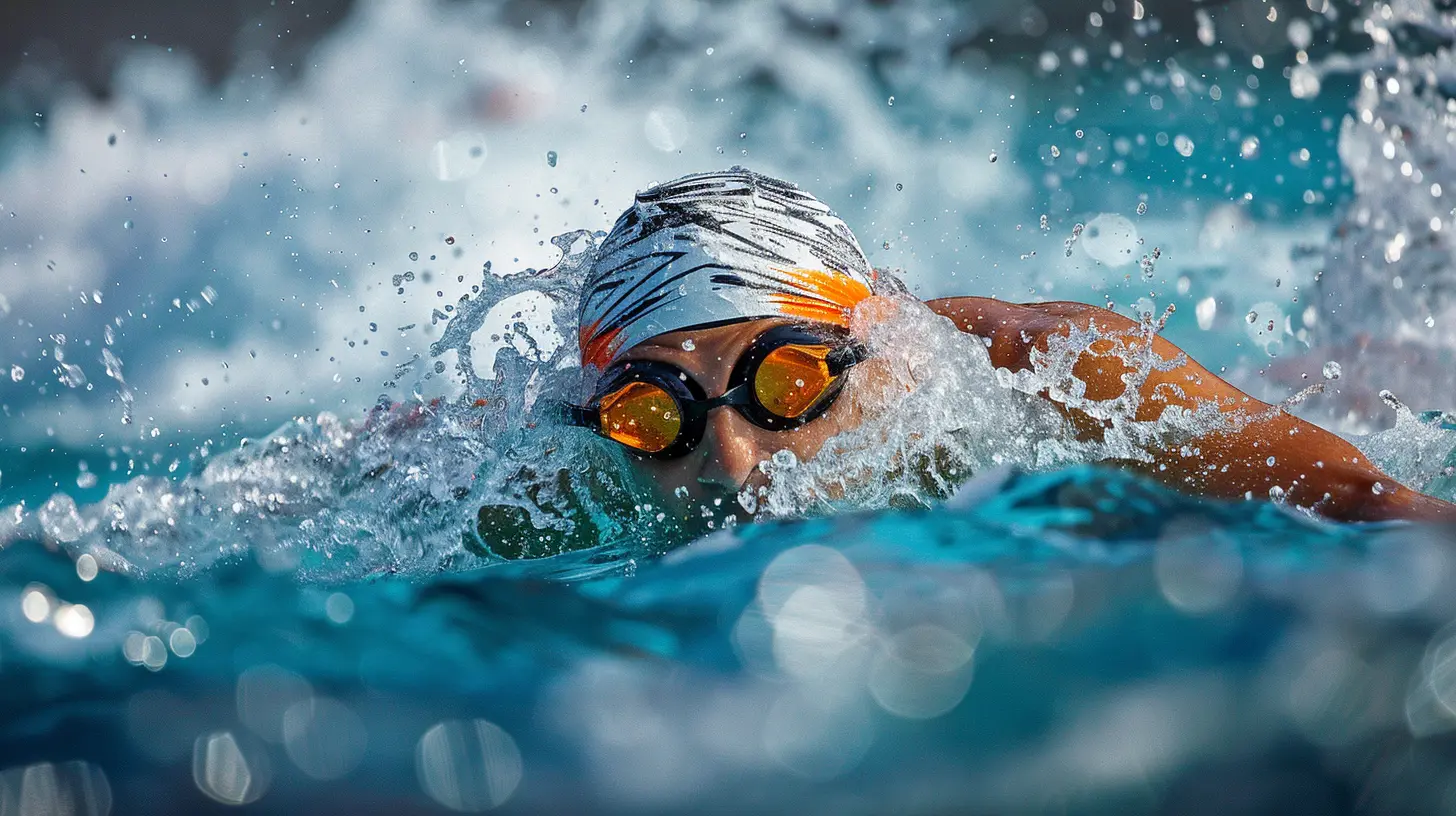
Why Do Swim Workouts Without a Pool?
Before we get into the exercises, you might be wondering, “Why should I bother with swim workouts if I don’t have a pool?” Well, here are some solid reasons:1. Maintain Muscle Memory: Swimming involves specific movement patterns that you can replicate on land to keep your muscles engaged and ready.
2. Strengthen Key Muscles: Dryland workouts are excellent for targeting the core, shoulders, and legs—muscles crucial to swimming.
3. Injury Prevention: Swimming can put strain on certain muscle groups. Strengthening these muscles on land can help prevent injuries once you're back in the water.
4. Convenience: No need to worry about traveling to the pool, dealing with crowded lanes, or adhering to pool hours. You can train anytime, anywhere.
Alright, now that we know why dryland swim workouts are beneficial, let’s get into how you can actually tackle them!
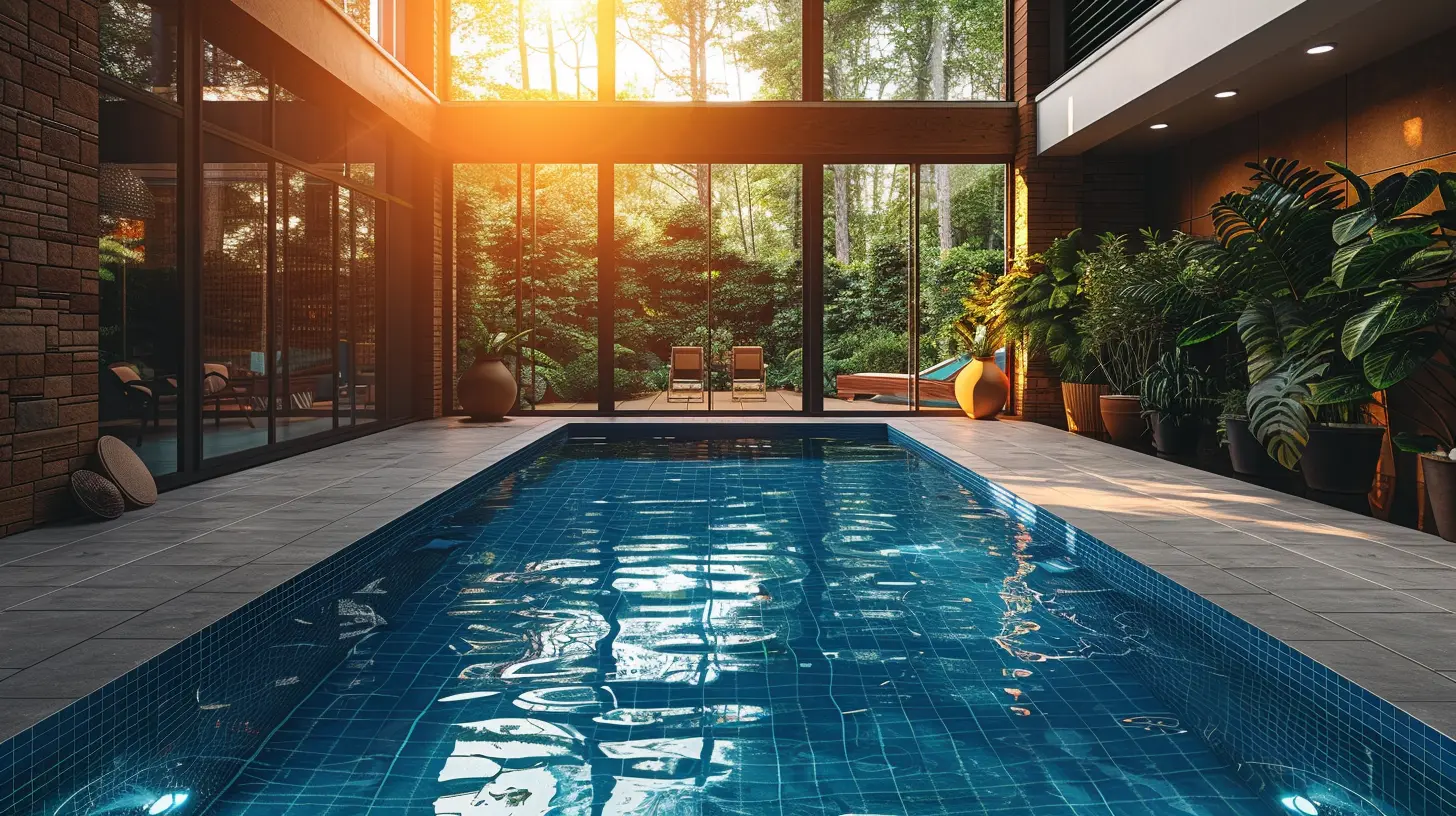
What Muscles Do You Use When Swimming?
Before we dive into the exercises, it's important to understand the muscles you're targeting in a swim workout. Knowing which muscles are engaged in swimming movements will help you focus on the right areas during your dryland training.1. Core Muscles: Your core is essential for stability in the water. Whether you're doing freestyle, backstroke, or butterfly, a strong core helps you maintain balance.
2. Shoulders and Upper Back: The lats, deltoids, and traps are heavily engaged during swimming strokes. These muscles pull you through the water, so they need to be strong and flexible.
3. Legs: Your quads, hamstrings, and calves are key for kicking and maintaining speed.
4. Arms: Biceps and triceps work hard during strokes like freestyle and butterfly, helping propel you forward.
Now that you’ve got that down, let’s get to the fun part—how you can simulate swimming at home without a pool.
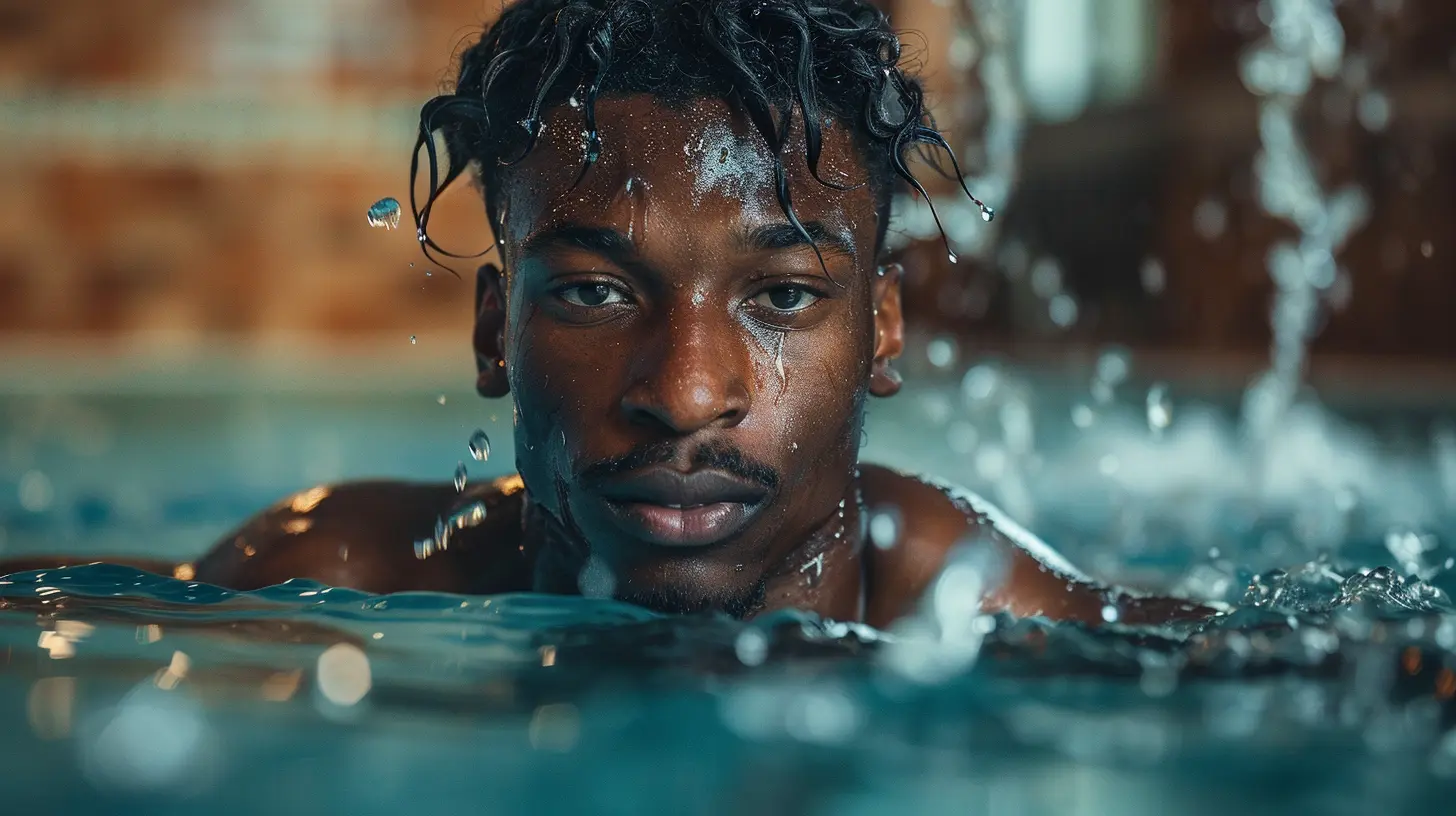
Dryland Exercises To Simulate Swim Movements
The good news is that you don’t need fancy equipment to mimic swim movements at home. With just your bodyweight (and maybe a resistance band for an extra challenge), you can get a killer workout that helps improve your swim performance.1. Superman Hold (Mimics Freestyle and Butterfly Strokes)
The Superman Hold is a great way to engage your core, lower back, and shoulders—all of which are key for swimming.- How to do it:
Lie face down on the floor with your arms extended in front of you and legs straight. Lift your chest, arms, and legs off the ground, holding for 10-20 seconds. Imagine you’re gliding through the water like Superman!
- Why it works: This exercise helps activate your core and back muscles, similar to the engagement you feel when doing the freestyle or butterfly stroke.
2. Plank Variations (Core Strength)
The plank is a powerhouse exercise for building core strength, which is crucial for maintaining balance and stability in the water.- How to do it:
Start in a push-up position, keeping your body in a straight line from head to toes. Hold for 30 seconds to 1 minute. For variation, try side planks or forearm planks.
- Why it works: A strong core is essential for swimming, and planks hit all the right muscles. Plus, they help improve posture, which is always a bonus in swimming.
3. Push-Ups (Upper Body Strength)
Push-ups are a great way to build upper body strength, especially in the chest, shoulders, and arms—all areas swimmers rely on.- How to do it:
Start in a plank position and lower your chest toward the floor, then push back up. Keep your body in a straight line throughout the movement.
- Why it works: This exercise mimics the pulling motion of swimming strokes, helping you build strength in your upper body.
4. Resistance Band Pulls (Simulates Freestyle Stroke)
If you’ve got a resistance band, this is an awesome exercise to simulate the freestyle stroke.- How to do it:
Attach the resistance band to a sturdy object. Stand facing the band and pull it towards you, mimicking the motion of a freestyle stroke with one arm at a time.
- Why it works: This exercise helps improve your pulling strength, which is crucial for swimming efficiently. Plus, it’s low impact, so it’s easy on your joints.
5. Squat Jumps (Leg Power)
Your legs are your motor when swimming, and squat jumps are a great way to build explosive power in your quads, hamstrings, and calves.- How to do it:
Stand with your feet shoulder-width apart. Lower into a squat, then jump up explosively, reaching your arms toward the sky. Land softly and repeat.
- Why it works: This exercise not only builds leg strength but also mimics the explosive movements you use when kicking in the water.
6. Flutter Kicks (Mimics Swim Kicking)
Flutter kicks are a great way to mimic the leg movements you use in swimming, particularly the flutter kick in freestyle and backstroke.- How to do it:
Lie flat on your back with your hands under your hips. Lift your legs off the ground a few inches and start kicking them up and down in a controlled motion.
- Why it works: This exercise strengthens your lower abs, hip flexors, and legs, all of which are essential for maintaining a strong kick in the pool.
7. Tricep Dips (Arm Power)
Strong triceps are crucial for completing a powerful stroke in swimming, and dips are an effective way to target them.- How to do it:
Find a sturdy chair or bench. Place your hands on the edge, facing forward, and lower your body by bending your elbows, then push back up.
- Why it works: This exercise strengthens your triceps, shoulders, and chest, all of which help with your arm strokes in the water.
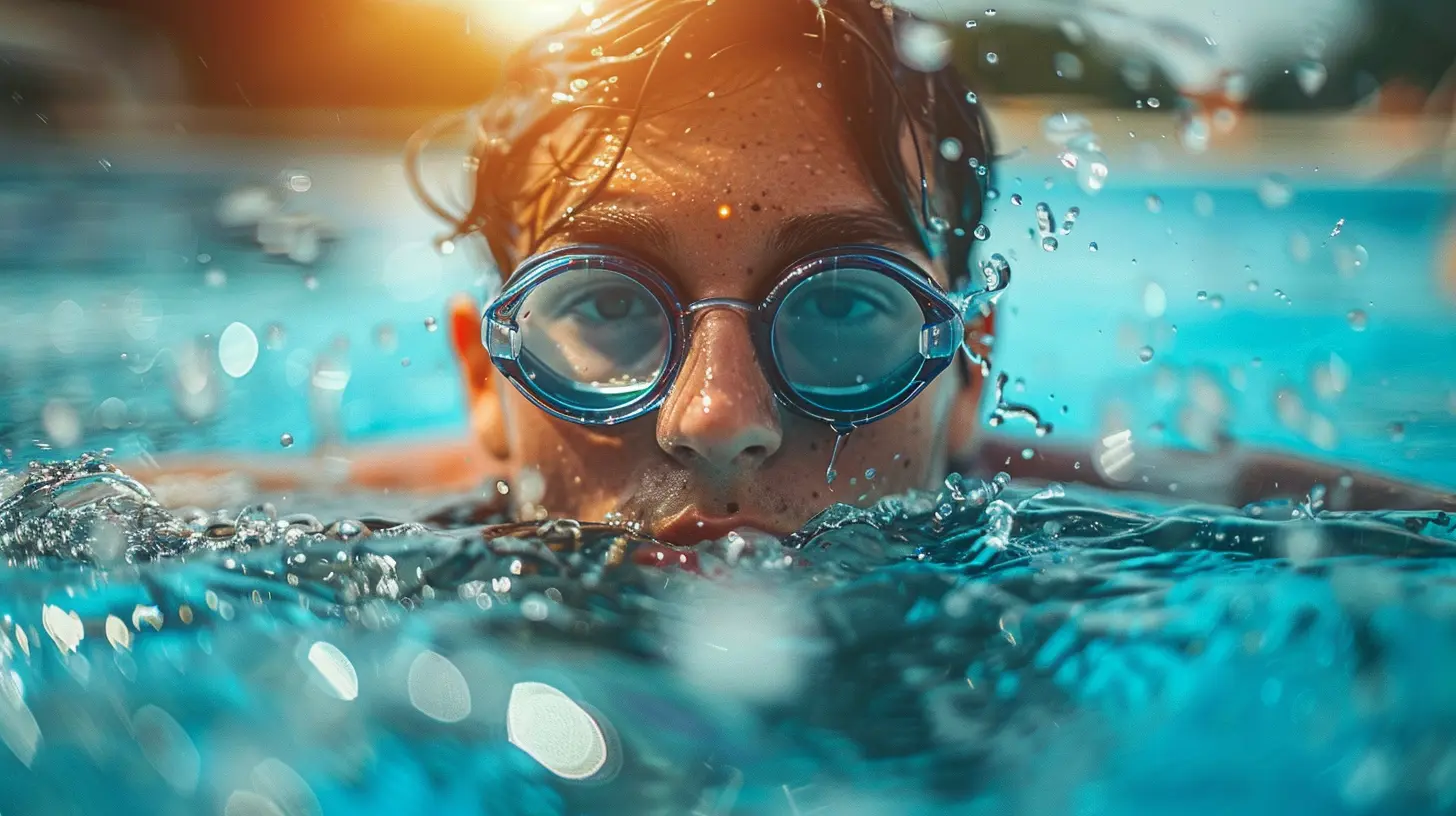
Incorporating Dryland Swim Workouts Into Your Routine
Now that you’ve got a list of swim-specific exercises, how do you incorporate them into your routine? Here’s a sample dryland workout that you can do 3-4 times a week to keep your swim muscles in tip-top shape.Sample Dryland Swim Workout:
- Warm-Up: 5-10 minutes of light cardio (jumping jacks, jogging in place)- Superman Hold: 3 sets of 20 seconds
- Push-Ups: 3 sets of 12-15 reps
- Plank: 3 sets of 30-60 seconds
- Resistance Band Pulls: 3 sets of 15 reps per arm
- Squat Jumps: 3 sets of 10 reps
- Flutter Kicks: 3 sets of 30 seconds
- Tricep Dips: 3 sets of 12 reps
Remember to stay consistent with your workouts! Just like swimming, dryland training requires regular practice to see progress.
The Importance of Stretching and Recovery
One thing swimmers know all too well is the importance of flexibility. Even though you’re not hitting the pool, make sure you incorporate stretching into your routine. Focus on your shoulders, hips, and hamstrings, as these areas tend to get tight with both swimming and dryland training.Don’t forget about recovery. Give your muscles time to rest and repair between workouts, and consider foam rolling or using a massage ball to work out any knots or tension.
Final Thoughts
No pool? No problem! With a bit of creativity and some basic equipment, you can still tackle a swim workout from the comfort of your home. By focusing on dryland exercises that target the same muscles used in the water, you can maintain your swimming fitness, improve your strength, and be ready to dive back into the pool when you get the chance.So, what are you waiting for? Grab your yoga mat, a resistance band, and get moving. Your next swim meet (or beach vacation) will thank you!
all images in this post were generated using AI tools
Category:
SwimmingAuthor:

Easton Simmons
Discussion
rate this article
1 comments
Tabitha Price
Great tips! Embracing swim workouts at home shows creativity and dedication. Stay motivated, keep pushing your limits, and remember, progress is progress, no matter where you train!
November 2, 2025 at 2:01 PM

Easton Simmons
Thank you! I'm glad you found the tips helpful. Embracing creativity in training can make all the difference! Keep pushing your limits!
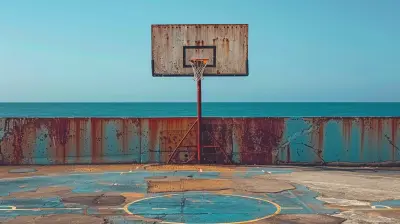

![Breaking Boundaries: How [Player Name] Redefined Their Position](/pictures/blog/small/breaking-boundaries-how-player-name-redefined-their-position_2.webp)